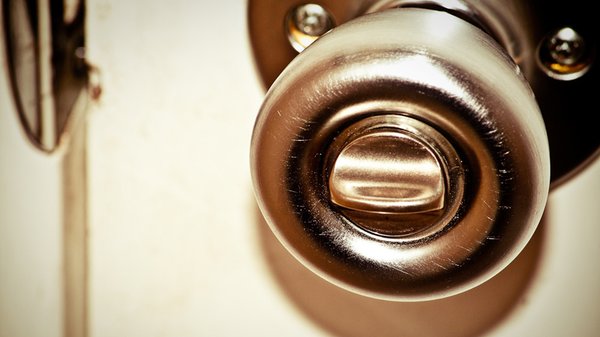The Oligodynamic Effect: How Some Metals Kill Off Bacteria

The silver in silverware has been around for ages, but there's a reason it's still in use today: it's antiseptic.
A recent story from blog Mind the Science Gap got us thinking about the pitfalls of overusing antibacterial soap. The active bacteria killer in those soaps, Triclosan, is just about everywhere these days--it shows up in everything from pizza cutters to toothpaste. It's possible that Triclosan isn't entirely healthy for us; worse, overuse may potentially be making some bacteria immune to Triclosan, and that's a whole new mess. But overuse of Triclosan doesn't mean we should stop caring about hygiene and let any old bacteria get us sick--we simply need to remember that there are other solutions out there that can kill bacteria. Like brass doorknobs, for example.
Fact: Frequently touched surfaces (especially in public places) are like safe havens for bacteria. Or breeding pools. Or discos, depending on how you like to visualize germs massing for an attack on your immune system. When our hands are unclean, we touch these services, depositing whatever germs we're carrying around with us. A lesser-known fact is that certain metals, such as brass, actually sterilize themselves after a certain period of time, making them ideal materials for surfaces like doorknobs.

It's called the oligodynamic effect. Wikipedia defines the effect as "a toxic effect of metal ions on living cells, algae, molds, spores, fungi,viruses, prokaryotic and eukaryotic microorganisms, even in relatively low concentrations." A study from the National College of Kathmandu in Nepal elaborates:
"The exact mechanism of this action is still unknown but some data suggest that the metal ions denature protein of the target cells by binding to reactive groups resulting in their precipitation and inactivation. The high affinity of cellular proteins for the metallic ions results in the death of the cells due to cumulative effects of the ion within the cells (Benson 2002). Similarly, silver inactivates enzymes by binding with sulfhydryl groups to form silver sulfides or sulfhydryl-binding propensity of silver ion disrupts cell membranes, disables proteins and inhibits enzyme activities (Thurman & Gerba 1988; Semikina & Skulacher 1990). The study also suggest that positively charged copper ion distorts the cell wall by bonding to negatively charged groups and allowing the silver ion into the cell (Hambidge 2001). Silver ions bind to DNA, RNA, enzymes and cellular proteins causing cell damage and death."
That study promotes the use of oligodynamic metals in pots used to hold drinking water, as they tested silver, brass and copper against water containing bacteria like E. coli and Salmonella in small doses. Within 4 hours, the copper pot had killed off the Salmonella microbes, while silver and copper took 8 and 12 hours. "Silver can serve as a disinfectant at concentrations about 1,000 times lower than the toxic level to mammalian life," says the study.

Silver is often used to coat containers used for water and other liquids to kill off bacteria. The oligodynamic effect also explains why silver works so well for eating utensils. Not only has the fork affected our evolution as a species, it's also kept us safe against potentially dangerous bacteria for centuries. Unfortunately, odds are that the utensils you use today are steel rather than silver. If you inherit the family silver, consider using it for more than fancy dinner parties.
And if you ever see a doorknob made from, say, stainless steel, beware--it's could be a hotbed of bacteria, some surviving for more than a month. A study of hospital doorknobs shows that brass and copper impede bacterial growth, while aluminum and stainless steel let the bacteria run wild. In fact, within 15 minutes the copper had already partially disinfected itself. So while it's always smart to practice good hygiene--wash your hands whenever it's appropriate--you're fighting an uphill battle every time you touch a steel or aluminum doorknob.
Оставить комментарий
Для комментирования необходимо войти через ![]() Вконтакте
Вконтакте
